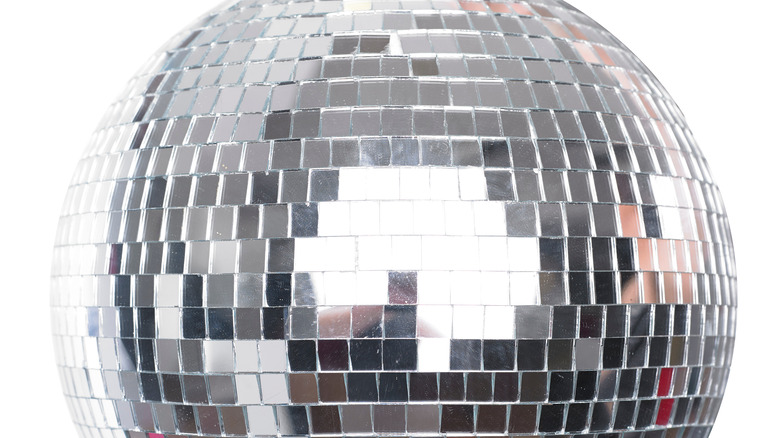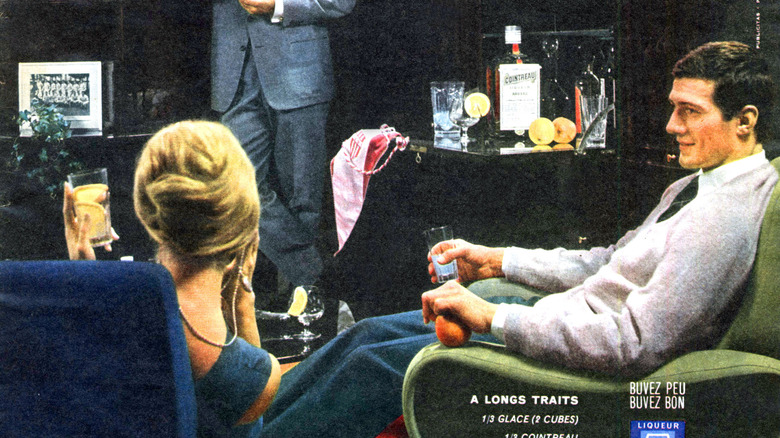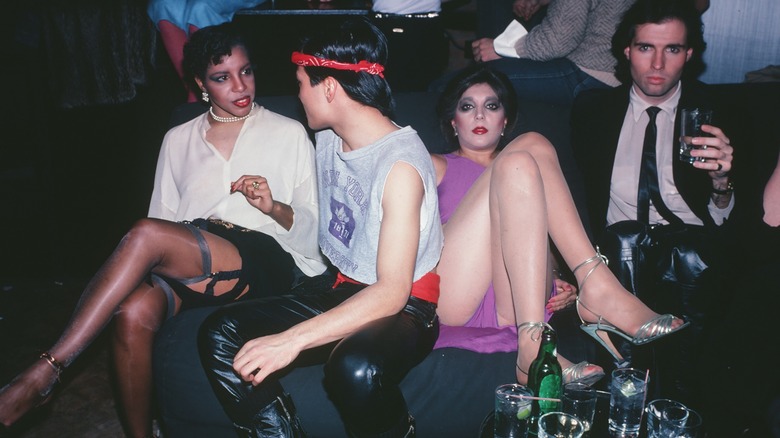The Most Popular Alcohol In America 50 Years Ago
Ordering a cocktail in the 1970s was likely a bit embarrassing — "So, have you decided between the Slow Screw and the Pink Squirrel?" — but the resulting concoctions must have done the job. Vodka was on the upswing, orange juice was a star mixer, and Galliano was the most popular liqueur of the decade in America, according to Difford's Guide (combine all three and you're most of the way to a Harvey Wallbanger, according to the recipe at Food & Wine). These "disco drinks" had a slightly sleazy cool, like a polyester jumpsuit or a key party; it's no surprise that sickly sweet drinks from the past, from dessert cocktails to tiki cocktails, had revivals this decade.
These are the biggest drinks from the decade of Watergate, leisure suits, and "The Hustle." Notably, half a century later, these drinks are appearing on menus again, according to Thrillist. "The bar owners wanted to do Prohibition era, speakeasy drinks. I was like nope," one leading mixologist told the site. "We're doing '70s s****y drinks."
Liqueurs lead the way
A bottle of Galliano is as tall and skinny as a 1970s actress. The resulting liqueur, as thick and sweet as cough medicine, tastes like botanicals and, distinctly, vanilla (via Food & Wine). It is probably the most archetypal liqueur of the decade, used in drinks like the Harvey Wallbanger, the creamsicle-like Golden Cadillac, and the horribly named libation Slow Comfortable Screw Against the Wall (per Difford's Guide). If you're going to make one of these drinks today, Difford's Guide recommends you seek out Galliano L'Autentico — the liqueur changed its formulation in the '90s, so you'll need L'Autentico for the traditional taste (and stronger alcohol content: the classic version is at 42.3 percent ABV).
Other liqueurs had a moment in the '70s as well. Amaretto has a taste a bit like a pint of Cherry Garcia ice cream: sweet almond dominates, though in fact it's often made from the pits of apricots (via Liquor). Almonds are not actually nuts — like apricots, cherries, peaches, and plums, they're drupes, according to Britannica, and the "nut" is actually a pit, which is why the pits of other drupes often taste similar. You can use amaretto in drinks like the Coppola-inspired Godfather cocktail — a mix of whisky and amaretto similar to an Old-Fashioned — or an amaretto sour.
Other liqueur-heavy cocktails of the 1970s include the Blue Hawaii (curaçao), the Merry Widow (Benedictine), and the Pink Squirrel (crème de noyeaux), according to Difford's Guide.
Vodka was in everything
Believe it or not, the Grasshopper cocktail was invented at a New Orleans restaurant in 1919, according to Difford's Guide, though the peak of its popularity was in the 1970s and '80s, when recipes added vodka to make a Flying Grasshopper (via Difford's Guide). This is a typical story for popular alcoholic drinks in the '70s, a time when bartenders often took classic recipes and made them boozier, typically by adding vodka — for example, the Vodka Stinger, a twist on a pre-Prohibition cocktail, which was the favored drink of Joanne in the 1970 musical "Company" (via Our Libatious Nature).
Other vodka drinks from previous decades, such as the White Russian of the 1960s and the Moscow Mule of the 1940s, reached cultural saturation this decade, when vodka replaced gin as the clear liquor of choice for drinkers (via Difford's Guide). That ubiquity extended to new drinks, as well; when Midori, a melon liqueur, launched in the U.S. in 1978 (at Studio 54, no less), it found its home in the vodka-based Midori Sour (via Liquor). And what could be more at home under a disco ball than a lime-green cocktail?


